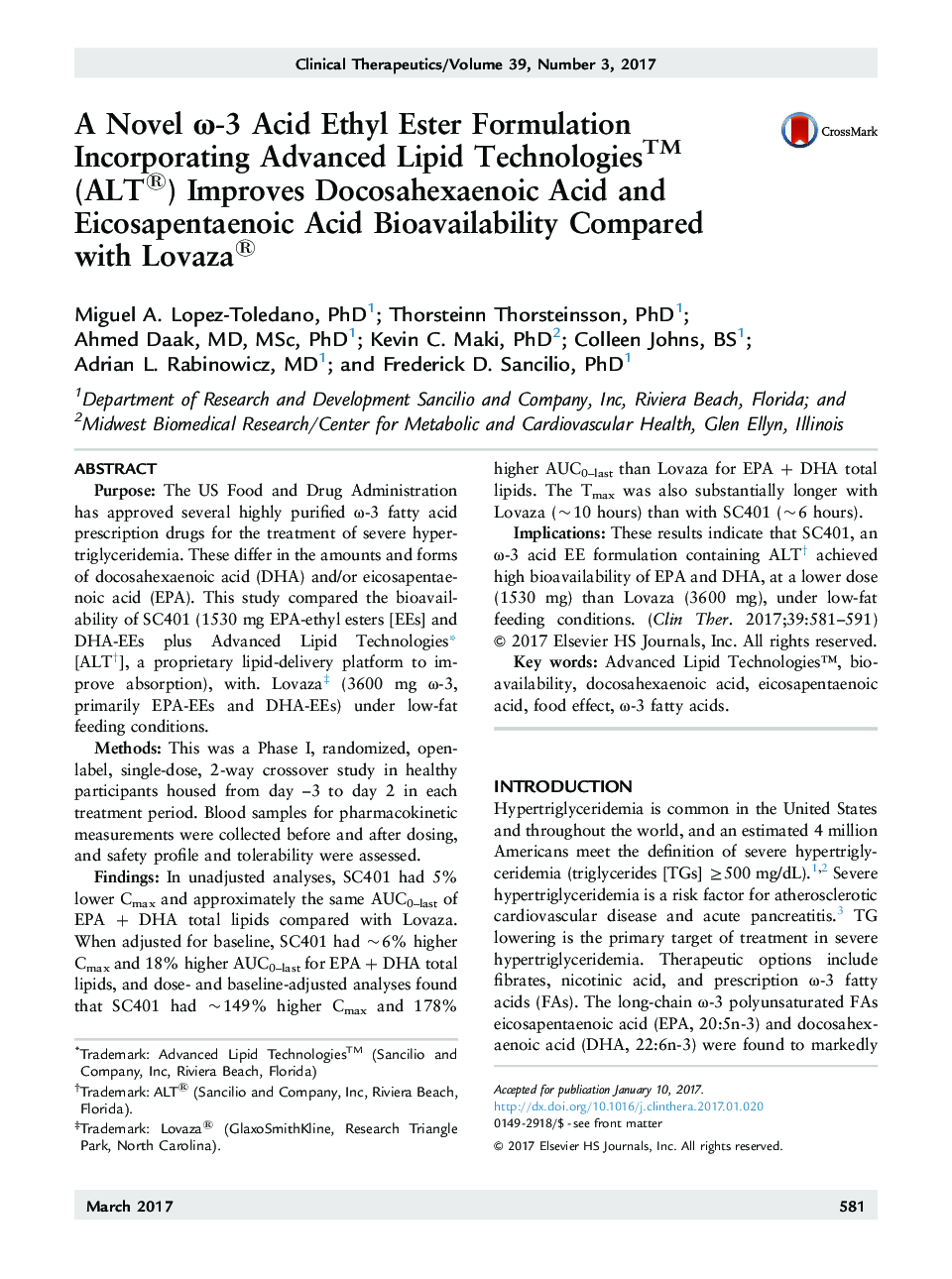| Article ID | Journal | Published Year | Pages | File Type |
|---|---|---|---|---|
| 5553864 | Clinical Therapeutics | 2017 | 11 Pages |
PurposeThe US Food and Drug Administration has approved several highly purified Ï-3 fatty acid prescription drugs for the treatment of severe hypertriglyceridemia. These differ in the amounts and forms of docosahexaenoic acid (DHA) and/or eicosapentaenoic acid (EPA). This study compared the bioavailability of SC401 (1530 mg EPA-ethyl esters [EEs] and DHA-EEs plus Advanced Lipid Technologiesâ [ALTâ ], a proprietary lipid-delivery platform to improve absorption), with. Lovazaâ¡ (3600 mg Ï-3, primarily EPA-EEs and DHA-EEs) under low-fat feeding conditions.MethodsThis was a Phase I, randomized, open-label, single-dose, 2-way crossover study in healthy participants housed from day -3 to day 2 in each treatment period. Blood samples for pharmacokinetic measurements were collected before and after dosing, and safety profile and tolerability were assessed.FindingsIn unadjusted analyses, SC401 had 5% lower Cmax and approximately the same AUC0-last of EPA + DHA total lipids compared with Lovaza. When adjusted for baseline, SC401 had ~6% higher Cmax and 18% higher AUC0-last for EPA + DHA total lipids, and dose- and baseline-adjusted analyses found that SC401 had ~149% higher Cmax and 178% higher AUC0-last than Lovaza for EPA + DHA total lipids. The Tmax was also substantially longer with Lovaza (~10 hours) than with SC401 (~6 hours).ImplicationsThese results indicate that SC401, an Ï-3 acid EE formulation containing ALTâ achieved high bioavailability of EPA and DHA, at a lower dose (1530 mg) than Lovaza (3600 mg), under low-fat feeding conditions.
